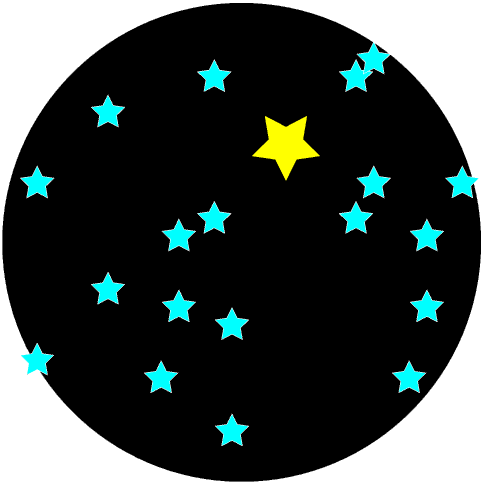
Sam has always loved astronomy and the Night Sky, and helped with the Astronomy Club at his Junior School. When he left the teachers and parents gave him his own astronomical telescope as their way of saying “thank you” to him for all his work with the Astronomy Club.
But owning his own telescope does not stop him from looking at and telling all his friends about what you can see in the Night Sky without one - after all the telescope was not invented until after 1600 CE so for at least six thousand years before that astronomers had had to manage without, and did so very well indeed. Even the great Nicolaus Copernicus (1473 - 1543) did not have a telescope!
Often on a fine evening Sam and his friends sit outside and watch the sun set and the stars come out as the sky gets darker - why the sky gets darker after Sunset is explained on another Page. They sometimes play a game, particularly if there is someone in the group who has not played it before.
They watch the Sun set, and then wait for the first “star” to appear - this could be a fixed star or a planet (these terms are explained on another Page) but in this game it does not matter which. They might have to wait several minutes. The first person to see one shouts “star” and points to it. They all count the number of stars they can see, here it is just one, and then count them again, and then wait for the next one. Each time someone sees a new star they all count the number of stars they can see, and then count them again. This is easy - up to seven! After seven they find that in the time it takes them to count the stars another one has appeared! On a clear night by the time the sky is fully dark Sam and his friends can see more than four thousand stars, far too many to count. Sam is very sad that today so many children live in towns and never see the Night Sky in all its glory because of all the light pollution.
Sam and his friends like watching the way the planets move across the sky against the background of the fixed stars, but with only five planets to look at but more than four thousand stars this is not easy! One day when it is too wet to do any real star-watching Sam uses his iPad to explain how it is done.
He shows them a (made-up) map of a part of the sky showing twenty stars and one planet.

He then shows them the same part of the sky as it appears a few weeks later.
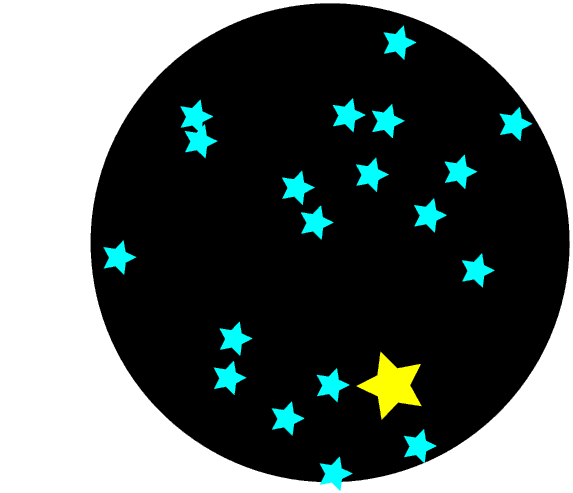
He asks them to explain how the planet has moved against the background of the stars.
They all have different ideas, but none of them work. Then he says ” Dont’t look at the stars, look only at the patterns they make” and suddenly it is easy.

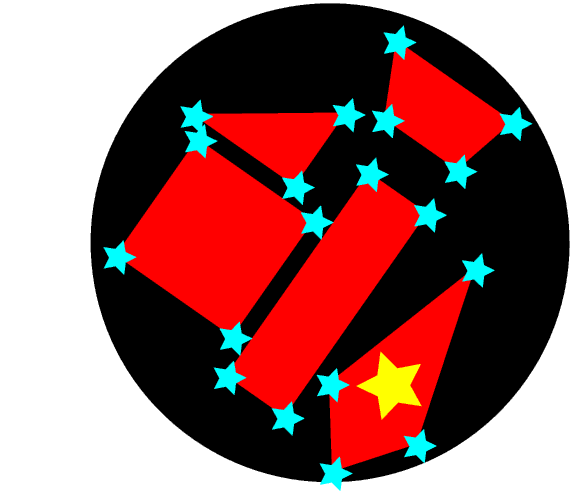
The stars have kept the same positions but they have rotated, the Trapezium has moved into sight and the Parallelogram has moved out of sight, and the planet has moved from the Square to the Kite!
The Ancient Astronomers did exactly the same: they looked for the patterns the stars made: these patterns are called constellations. Orion, Pegasus, Aries, Scorpio, Cancer, Leo, Ursa Major, Gemini, Andromeda are all constellations. Originally astronomers from different parts of the World used different patterns, but all today’s astronomers use the patterns the Roman astronomers used, two thousand years ago, but making up some more names for the constellations visible only from the Southern Hemisphere which the Romans could never have seen. Here are some of the constellations - only the brightest stars are shown.
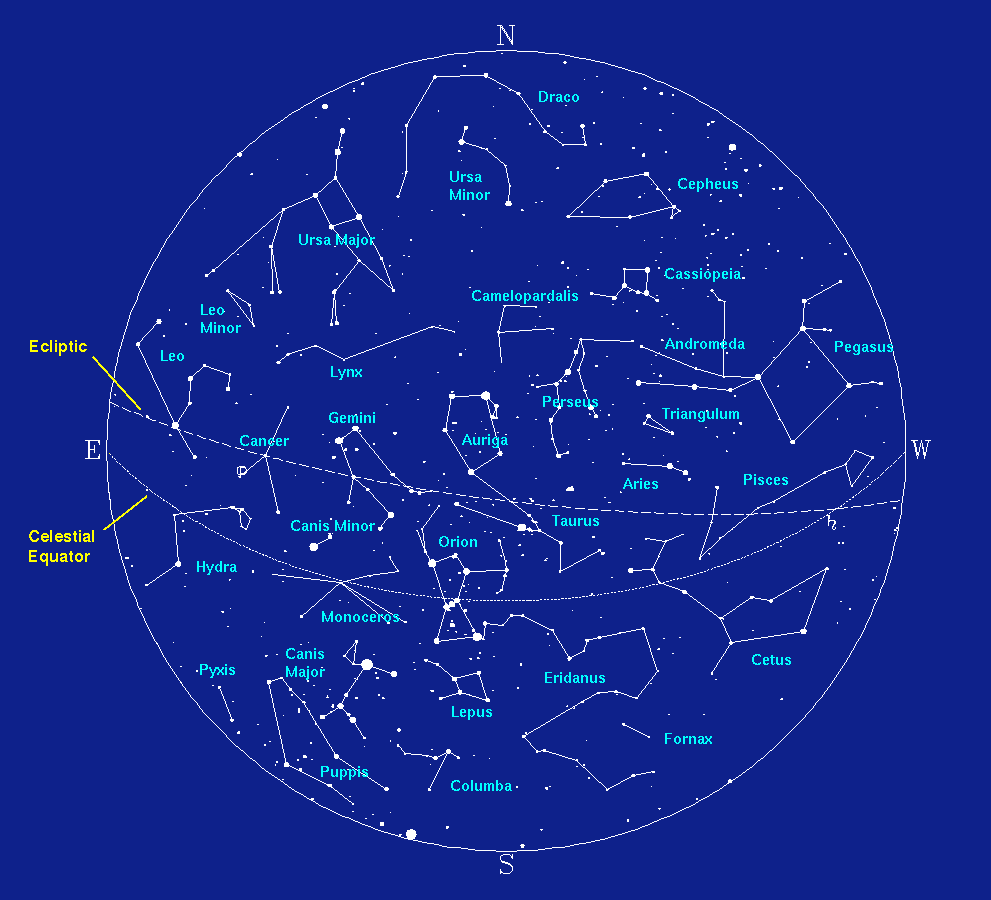
The ecliptic and celestial equator are explained on other Pages.
Here are the constellations which lie on the ecliptic and make up the Zodiac in greater detail (from nineplanets.org).
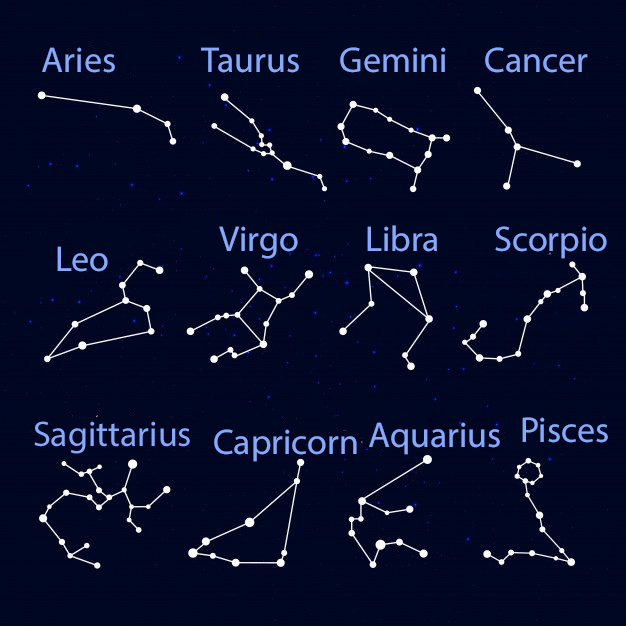
Sam does not think that Aries looks much like a ram but this does not prevent him from finding it in the sky.
The Plough (in America Dipper) is not actually a constellation, although many books say that it is, it is only a part of the constellation Ursa Major (The Great Bear - but a bear with a tail!).
Although only a very few of the very brightest stars (Sirius, Canopus, Betelgeuse, Arcturus, Viga, Aldebaran, etc) have ever been given names, today’s astronomers have catalogued every known star (millions and millions of them) in our galaxy: the catalogue entry includes the name of the constellation it is in and a combination of Greek letters and numbers. Sam finds explaining this to his friends boring - you do not need all this for naked-eye astronomy. Many star names are Greek or Roman, but lots more are Arabic.
We can only see the stars and constellations between Sunset and Sunrise, and this means that as the Earth moves round the Sun we can only see the constellations which are not on the same side of the Earth's orbit as the Sun, so we shall see different constellations at different times of the year.
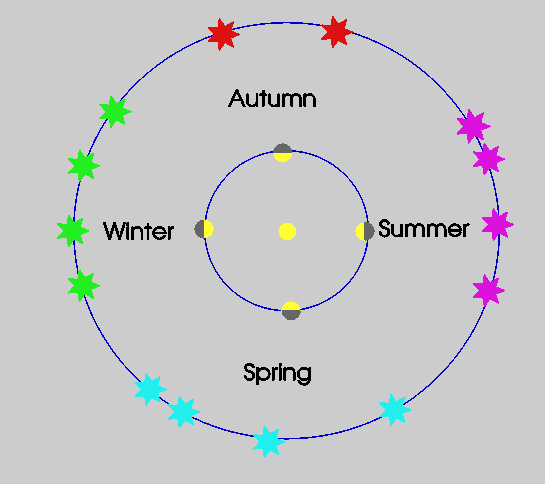
Orion is one of the easiest constellations to recognise, it is visible in the sky from January to April. The bright red star in the top left corner of Orion’s body has the Arabic name Betelgeuse, but today it is usually pronounced beetlejuice.
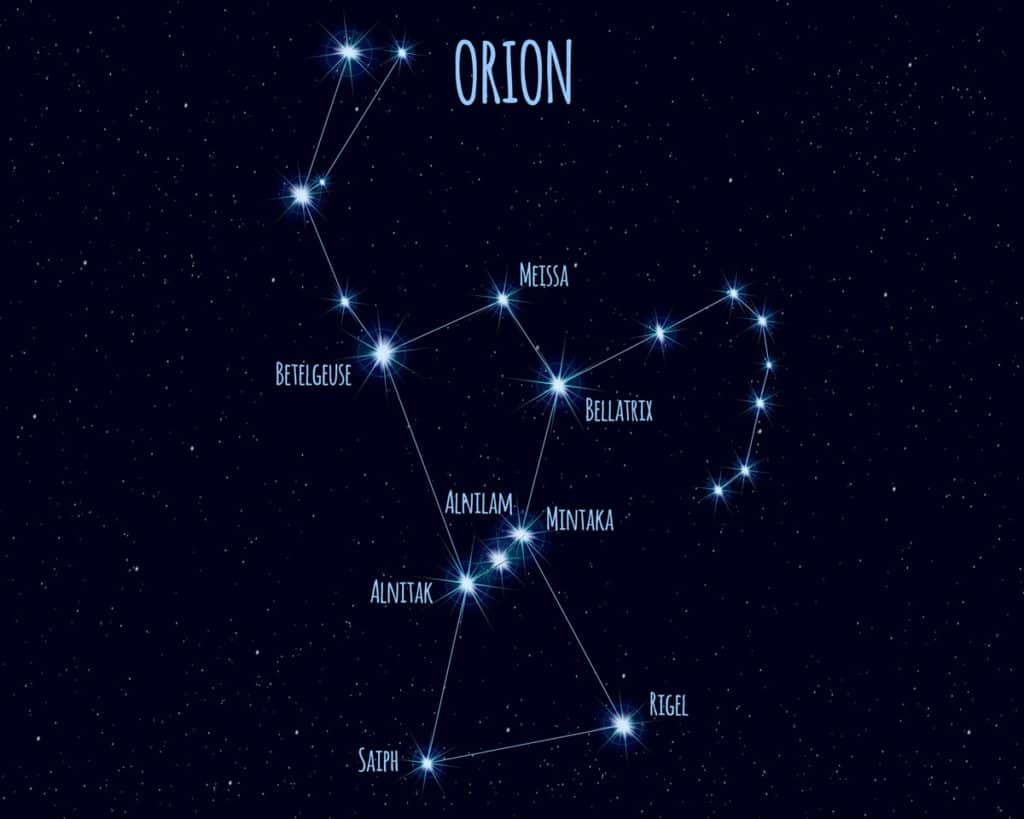
When Sam first became interested in astronomy he was given a book which gave a map of the Night Sky showing all the stars and constellations visible from England for each month of the year - constellations and stars only, not the planets, because the planets move through the constellations: Mars might be in Aries today but it then moves into Taurus, then Gemini, then Cancer and so on - this is described on another Page.
Today he does not often use this book, he usually uses an App on his tablet. He holds it up to the sky and it shows everything, Moon, stars and planets, even comets, he can see.
An App on your phone or tablet is by far the best way of finding your way about the Night Sky because what you see in the Night Sky depends upon where you are on the surface of the Earth and the date and time for your time zone, and your phone or tablet already knows these.
There are lots of different apps, like most things on the Web some very good and some very bad, so do ask an adult to help you to find the one which is right for you - here are some starters.© Barry Gray September 2022